Still Time celebrates humans and nature, always considering that we are here on Earth together. The music reveals some new percussion sounds added to the studio at Space Center Music Productions in Sandane, Norway, and some experiments with international ethnic voices.
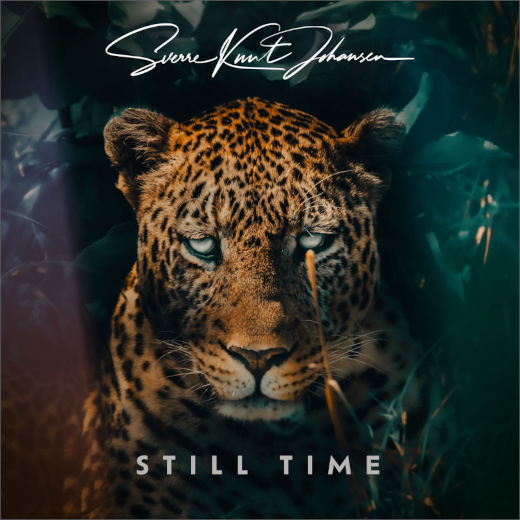
Music, imagery and ethnic human voices to warn us
Still Time is facing several important types of global issues, namely finding a way of responding to the extinction of animals, man-made climate change, and the race against time to turn this around. The artist provides a powerful connection with a photograph by Solly Levi for each track. Still Time celebrates humans and nature, always considering that we are here on Earth together. The music reveals some new percussion sounds added to the studio at Space Center Music Productions in Sandane, Norway, and some experiments with international ethnic voices. The music is crafted with love for all animals on this planet, they are all heroes and represent the purity of this Earth. The visualization takes place in Africa, in the deserts of Namibia where traditionally difficult desert conditions have become extreme.
Within the Kalahari region, life has always been a struggle but in the desert, recently, the heat has been increasing even more. The amazing photographs connect directly to the music, taken in nature reserves including The Etosha National Park, Namib Naukluft National Park, the Masai Mara National Reserve in Namibia and also some photos from Kenya. The Elephant imitating sounds and Flamingo imitating sounds come from the PROPHET X hybrid synth, according to Johansen.
Certain sounds, like birds and whales, are attractive for sound sculpting, and the pre-recorded vocals are used as an instrument by the composer to craft the work. The vocalists that I hear on Still Time are very skilled, they all sound extraordinarily clear, soulful and energetic. Johansen confides, “One of the things I did on most of the songs was to find voices that could fit the mood and intensity of the music. This took a lot of time and required patience and a lot of editing. The human voices in the music are the warning siren for our climate catastrophes. Most of the voices are coming from various ethnic natives all over the world. As a producer and composer it is always hard work, but sometimes you get lucky putting together elements that are beyond what you expected. In that moment you realize that you have created something unique; this is not happening a lot, but sometimes it does.”
Johansen uses music, imagery and ethnic human voices to warn us, instead of screaming out about disasters evidently caused by climate change. Perhaps we can learn from slowing down the pace of climate change and protecting our planet for future generations. Scientists are observing changes in the Earth’s climate in every region and across the whole climate system. Many of the changes observed in the climate are unprecedented in thousands, if not hundreds of thousands of years, and some of the changes already set in motion such as continued rising sea levels that are irreversible over hundreds to thousands of years.
She sings over the rumbling destruction and violence ::
As we open, the feeling is solemn and dark, deep gothic, slow and gloomy, massive extinction is clearly a heavy topic. There are curly antlers on a black and white animal, possibly a Bontebok, facing ahead looking back at us, one single animal standing in desert’s sandy hills with sparse tall grasses. I imagine that this is sunset at the Kalahari desert, a featureless undulating sand covered plain that goes on forever. The track title is “Massive Extinction” (9:17), makes an instrumental statement and then stops and pauses. Then the vocalist sings her message, with a dark slow somber and even sentimental at times. When the massive extinction rips, the low tones rumble, sounding very dangerous. She sings over the rumbling destruction and violence, until things pause and there is silence for a moment. Now the woodwind-like electronics take up the sad story, asking what is left now?
And yet, there is something continuing, all is not lost. I think I hear sticks clacking or rattling, perhaps the jungle forest is restless. “Still Time (Saving Our Planet)” (5:17) at first moments offers a hint of percussion and no beat yet, but eventually there is a surprise followed by a calm and eventually suggestions of haunting female voices singing ethereal drones. All around the various sounds explore various instruments rebuilding the lush wilderness, and already a calm repairing and healing has returned. Now the big booming drums are here and they thunder with power. The forest continues to calmly knit itself back somehow and the listener dreams of life forever, light and hope, with suggestions of singing and clacking.
It is believed that the natural mineral pan in Etosha National Park was first formed over 100 million years ago. The Etosha Pan is a vast, bare, open expanse of shimmering green and white that covers around 4,800Km and is visible from space. A geological pan is a vast hollow in the ground in which water may collect. What remains is usually a vast wasteland that is crusty with salt deposits from when the water dries up completely. The picture shows a big rhinoceros coming right at us. The land is flat or maybe like surf going on forever but it is salt and not foam that makes whitecaps out there, “Rhinoceros On Large Salt Pan” (6:45). Surprisingly, for being about a big animal this sound is very light and fluttery with lots of sunny colors, the harp is the main instrument, the beat is easy and playful and very relaxing. There are other string instruments that seem to evolve, and are very warm and flowing. The harps all weave a calming trance repeating the elegant phrases over and over endlessly, as if the desert is a spirit garden.
Walvis Bay Wetlands and the Golden Flamingo Lake are one of the most important coastal wetlands of southern Africa. Over 150,000 migrant birds spend the summer months in Walvis Bay and non-breeding palearctic, and intra-African species dominate. Here on the surface of the water flamencos take flight as the thunderhead looms with a silver edge from the glare of the sun, disappearing behind the gigantic dark cloud. Below, the birds are running and flapping as they go up into the air, splashing, “Storm Is Coming (At Walvis Bay)” (9:53). I hear rushing air, chaos, a bass beat, all the elements coming together to grow into a huge storm, the sound of wind coming from a long distance and then woodwinds and someone singing, a young man sings strange calm words in his language. After some moments of calm the storm begins, thunder and electronic birds scattering, then it calms momentarily and suddenly the beat kicks in and takes over, complex drum patterns with a man singing a duet with a woman. Other voices join in as the beat takes us through the storm. The percussion and the use of voices are a new dimension for Johansen, this electronic performance sounds like real drums, engaging and polyrhythmic.
Big puffy sunny blue sky clouds up above ::
The next picture is of white clouds above one giraffe, a single giraffe standing facing ahead with the neck turned behind to look at us. There are big puffy sunny blue sky clouds up above and strange glare like a mist down below where the giraffe is standing, “White Clouds Above Giraffe” (8:07), I hear ringing rattles and elements of a melody begin and then pause to return again and again, now the beat comes in running full speed sure footed electronics while the sky goes forever and we stand on the Earth looking up. Here the grasslands go on forever with the wind blowing and the sun streaming down, dry hot beams.
Next, some very strange old dry dead tree shapes stuck abruptly in the empty sand, sad and huge echoes reverberate at times, with clicking and rattling, the bass hums in a sinister light, and the orchestra emerges. “Dead Vlei – The Most Beautiful Dead Place On Earth” (6:36), we are descending step by step into a deadly dark bottomless realm below with dismal tones of doom. There is someone singing in there somewhere.
“Oryx In Yellow Light” (6:10) features wind instruments blowing dryly and harshly, and I think I hear walking sounds in the grasslands, scratching and crunching, step by step, while the flutes circle above, swooping playfully, and then more woodwinds join to cavort and frolic. Here the instruments create a strange open haunted landscape, with rustling and the sound of lots of brush with woodwinds and the sea crashing on the beach, in the distance birds, there must be thousands of birds, all flocking together and calling. This is overall quiet and delicate, like odd shadows.
The subsequent track is where things get more intense, huge creatures are walking in a line at a steady pace, and change is here. The feeling is big and forceful, simple and powerful, with a deep beat and angular screeching brass and drums. There is a group of elephants coming directly at us, we are facing a group of possibly seven and the dusty wind is swirling in the glaring heat of the sun, “The Desert Elephants Of Namibia” (4:06). They move quickly but are huge, the angular tones continue steadily, beasts calling, irregular meters, syncopation, shifting accents, with jagged and unpredictable rhythms, creating a sense of primal energy, on and on the caravan of beasts walk.
Meanwhile, the birds are calm and standing in the flat silent surface of the water, “The Golden Flamingo Lake” (9:14), with strings and the woodwinds also some electronic choral effects, the birds are calm and communicative, the form holds while the elements shift and change. It is peaceful here on the lake, with lots of interesting textures and underwater electronics.
The final picture is “A Cheetah’s Realm (At The Masai Mara National Reserve)” (7:21), the electronic forces emerge just above the constant running beat, and this is the jam. Now the drums kick in, building slowly into something efficient, fast, and lethal, and we are running through the savanna grasslands at a fast pace. The bass brings it home. We are moving at an extraordinary pace, feeling each step and bump as the footing offers infinite variations, as we run there are different textures and elements or creatures. Soon things change as we move along, while the drums keep the running feeling strong.
Symphonic electronic music dominated the first releases but Johansen’s more recent releases vary widely in style, as he makes music that is both lyrical and rhythmic and often with elements of classical and electronic ambient music genres. Johansen’s first album was released in 1994 and was produced by Erik Wøllo on the Norwegian label Origo Sound. In 1999, he released The Source of Energy, followed by Planets in 2012. Johansen began distributing his music in 2013 on his own Origin Music label, only for download and streaming. Still Time is Johansen’s seventh release on the Spotted Peccary Music label, his previous releases are Metahuman (2022), Dreams Beyond (2020), Precambrian (2019), The Vast Expanse (2018), Secret Space Program (2017), and Earth From Above (2016).
Still Time is available on Spotted Peccary Music. [Bandcamp | Site]






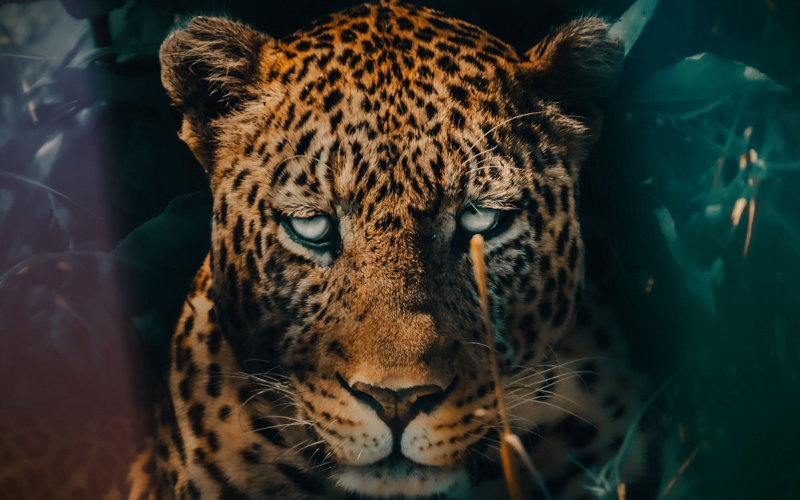







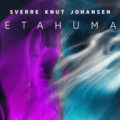
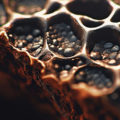
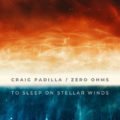
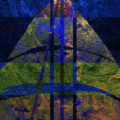



![Pole :: Tempus Remixes (Mute) — [concise]](https://igloomag.com/wp/wp-content/uploads/2025/04/pole-tempus-remixes_feat-75x75.jpg)






![Hasbeen :: Bunker Symphonies II (Clean Error) — [concise]](https://igloomag.com/wp/wp-content/uploads/2025/04/hasbeen-bunker-symphonies-ii_feat-75x75.jpg)

